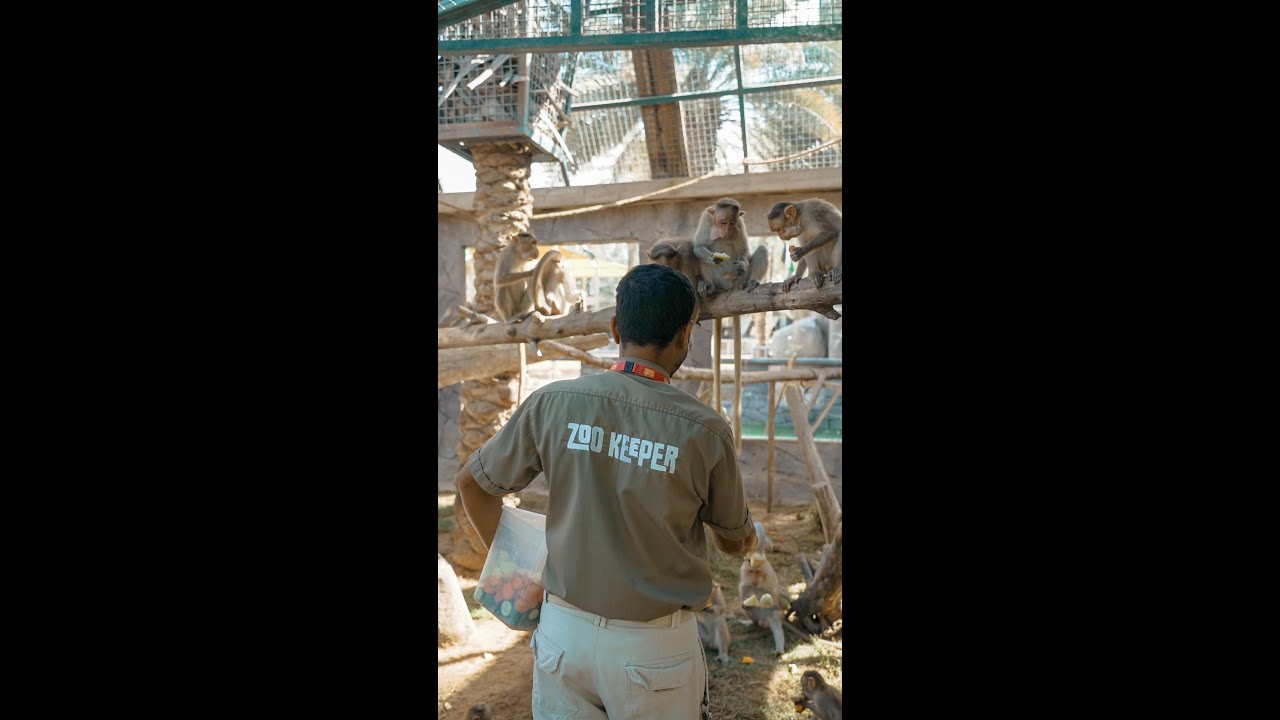- Unique social structures and behaviors of the Indian Bonnet macaques, reflecting their traits closely related to humans.
- Cognitive abilities and intelligence levels of Indian Bonnet macaques, highlighting comparisons with human behavior.
- Conservation challenges faced by Indian Bonnet macaques and strategies implemented for their protection and survival.
- The role of Indian Bonnet macaques in their ecosystems, contributing to biological diversity and environmental stability.
- Insights into the video representation and its accuracy or portrayal of Indian Bonnet macaques’ human-like traits.
Indian Bonnet macaques, scientifically known as Macaca radiata, are among the most fascinating primates inhabiting the Indian subcontinent. These macaques have drawn attention for their striking similarities to humans, especially in terms of social behavior and cognitive abilities. Known for their expressive faces and complex social interactions, bonnet macaques serve as a fascinating study in the broader field of zoology, bridging gaps between human behavior and animal instincts.
An intriguing aspect of Indian Bonnet macaques is their elaborate social structures and behaviors, which often mirror human societies. These primates display a wide range of social interactions that include cooperation, grooming, and social bonding. Their ability to live in hierarchical groups reflects an advanced form of societal organization. Group dynamics often incorporate a defined social ladder influencing access to resources, mating opportunities, and interaction dynamics.
Grooming, a shared trait with humans, is a central activity for these macaques. It is not only a means to maintain hygiene but also a critical social tool. Grooming serves as a way to form alliances, establish hierarchies, and even resolve conflicts within the troop. Such behaviors reflect the underlying complexity of their social interactions, highlighting innate needs for social connectivity and interpersonal relations, reminiscent of human social traits.
Cognitive abilities of Indian Bonnet macaques provide another fascinating insight into their human-like traits. These primates exhibit problem-solving skills, tool use, and an ability to learn from their environment. Such intelligence not only showcases their adaptability but also their capability for abstract thinking and innovation in accessing food and resources.
In terms of evolutionary biology, such cognitive features suggest a close lineage with higher primates, including humans. This intelligence is often demonstrated in their habitat, where bonnet macaques can manipulate objects and utilize simple tools to aid in food retrieval. This behavior aligns with the idea that these primates have developed cognitive skills that assist in navigating their environment and optimizing their survival chances.
However, the Indian Bonnet macaques face several conservation challenges, significantly affecting their populations across India. Rapid urbanization and habitat fragmentation pose formidable threats, reducing the availability of their natural habitats. The destruction of forests and increasing human encroachment are significant issues leading to human-wildlife conflicts. These incidents often result in harsh retaliation against these primates due to their scavenging behavior in urban areas.
Conservation efforts to protect Indian Bonnet macaques are crucial, focusing on habitat preservation and conflict resolution strategies. Strategies include establishing protected areas, promoting reforestation projects, and facilitating community awareness programs to reduce conflicts between humans and macaques. Such measures are essential to safeguard these primates and maintain the delicate balance of their ecosystems.
The ecological role of Indian Bonnet macaques cannot be understated. As primary seed dispersers, they contribute significantly to maintaining forest diversity. By spreading seeds, they aid in forest regeneration and support overall ecosystem health. Their activities are thus integral in promoting biodiversity and ensuring ecosystem resilience against environmental changes.
Lastly, the visual representation of Indian Bonnet macaques in videos or documentaries provides a dynamic platform to understand their behaviors and traits. Such media portrayals can be instrumental in raising awareness about their plight and educating the public on the importance of conservation. Videos can capture intricate behaviors, social interactions, and environmental challenges facing these macaques, offering an engaging visual insight into their lives.
This audiovisual portrayal should aim to accurately reflect the traits and behaviors of these primates. The responsibilities of creators include ensuring authenticity and avoiding anthropomorphism, which could misrepresent their natural behaviors. Through an accurate depiction, audiences can better appreciate the parallels between bonnet macaques and humans, fostering a deeper understanding and commitment to their conservation.
Indian Bonnet macaques are remarkable creatures with captivating behaviors and traits that closely mirror those of humans. Their social structures, cognitive abilities, and ecological roles are central to understanding their place within the primate lineage and the environment. By addressing conservation challenges and promoting awareness, we can work toward preserving these intriguing primates, securing their future for generations to come.
*****
Source Description
Did you know Indian Bonnet macaques have a trait close to humans? They can perceive color and use vision to search for food! Learn more and visit #EmiratesParkZooandResort! Book your tickets via link in bio.
هل تعلم أن قرود المكاك البونيه الهندية لديها سمة قريبة من البشر؟ يمكنهم إدراك اللون واستخدام الرؤية للبحث عن الطعام! اعرف المزيد وقم بزيارة #حديقة_الإمارات_للحيوانات
احجزوا تذاكركم عبر الرابط في البايو
#WhereTheMemoriesAreMade #monkeys #zoo #AbuDhabiZoo
#IndianBonnetMacaques #visitabudhabi
#حيث_تصنع_الذكريات #عالم_الحيوانات #حقائق_عن_القردة


